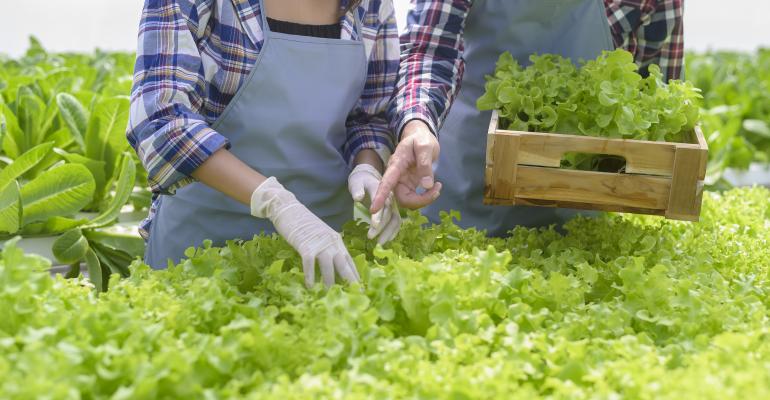It appears indoor farming cannot control all environments, especially the one that is the most important—the cost of running a business.
Many of the climate-controlled growers, which provide items like salad kits to grocers across the country, either find themselves facing a high wall of debt or are barely hanging on to their business. The casualty list is getting long: Fifth Season, which projected a 600% growth in 2022 sales and was looking to build a large farm in Columbus, Ohio, suddenly shut down everything at its Braddock, Pa., site. AppHarvest is facing a lawsuit from investors who say the company has under delivered and announced at its most recent quarterly meeting that the business could shutter. In a May 2021 investor presentation, AeroFarms announced an estimated $4 million in 2021 EBITDA-adjusted revenue and $39 million in losses.
Not long ago the market was exploding with cash from investors coming out of every crack. As of December 2022 $1.7 billion had been soaked into indoor farming, but the costs of competing against traditional outdoor farming have been heavy. It’s easy to see why investors fell hard. Indoor farming uses far less water than outdoor farming to grow product, and it also carries notable benefits like avoiding E.coli outbreaks and plant diseases. Pesticides are eliminated and the use of fertilizer is drastically reduced. Produce can be grown closer to the end game (supermarkets), reducing shipping costs. However, all those benefits cost money.
The initial cost of indoor farms can be very high, and maintaining them is a constant financial drag. Light, for example, must be fabricated, and the cost for a 10,000-square-foot farm, which is considered small, could require up to $200,000 in electrical costs. Air conditioners and other equipment add to the bill. The use of LED lights, which is used by the marijuana industry, is starting to create traction in the indoor farming industry. Indoor farms also require a lot of technology, and some even use robots instead of human laborers. Maintaining the gadgets requires indoor farms to hire engineers, who come with higher salaries. Most companies also spend a ton in research and development.
New funding for indoor farms is starting to waver, mainly because it could take almost a decade for a farm to break even. Selling lettuce apparently does not equate to making a ton of green. However, some indoor farms have looked into selling other products in their controlled-climate space. Plants can be produced for pharmaceuticals, fragrances, or cosmetics.
According to Gordon-Smith, it could take more than a decade for indoor farms to compete with outdoor farms at scale in North America. Some companies are making headway. Soli Organic, which supplies to Walmart and Wegmans, is growing product in soil, which is not common in indoor farming, and its patented process has produced promising returns. Automated greenhouses have allowed Little Leaf Farms to remain profitable. Some companies are turning to other produce to make more money.





